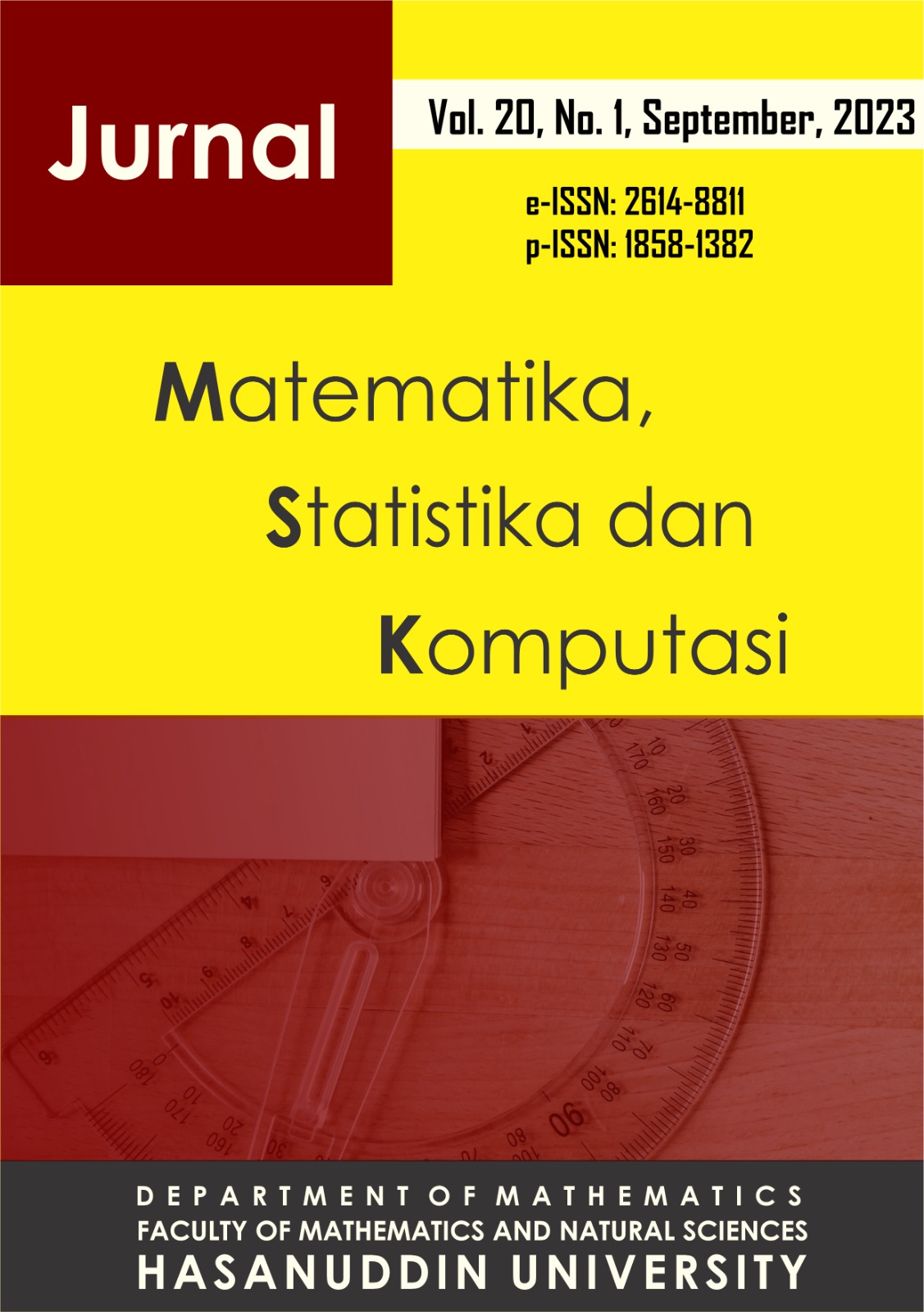Estimation Of Parameter Regression Panel Data Model Using Least Square Dummy Variable Method
DOI:
https://doi.org/10.20956/j.v20i1.27530Keywords:
Panel Data Regression, Least Square Dummy Variable Method, Human Development IndexAbstract
Panel data regression is a set of techniques for modeling the effect of independent variable on the dependent variable of panel data. The parameter estimation in the panel data regression model used the least squares method, but the difference between the intercept and the slope could not be known between time and between cross-section. One of the methods used is the Least Square Dummy Variable method (LSDV). The LSDV method is a method that has the same stages as the least squares method, but uses dummy variable to get different intercept score. This research uses the LSDV method to explain the differences in intercept between cross-sections using balanced panel data, namely the Human Development Index (HDI) data in South Sulawesi 2011-2017 to get fixed effect panel data regression model parameters on that data and the regencies with Average Length of School (ALS) and Life Expectancy (LE) variable that has the most influence on HDI based on the coefficient of determination criteria. According to the results of this research, the score of the coefficient of determination in the panel data regression model using the fixed effect model in each cross-section (regency), there are also three regencies with the highest coefficient of determination, respectively, Gowa, Pare-pare and Bantaeng regency that ALS and LE are able to explain the HDI variables 98.942%, 98.089% and 97.444%.
References
Baltagi, B. H., 2005. Econometric Analysis of Panel Data, third Edition. John Wiley & Sons Ltd.,
England.
Greene, W. H.,1997. Econometric Analysis. Hall International, Inc., New York.
Greene, W. H., 2002. Econometric Analysis, Fifth Edition.Hall International, Inc., New York.
Gujarati, D. N., 2004. Basic Econometrics, Fourth Edition. McGraw-Hill Companies., New York
Hsiao, C., Li, Q., Liang, Z., & Xie, W., 2019. Panel Data Estimation for Correlated Random Coefficients Models. Econometrics, MDPI, Vol. 7, No. 1, 1-18.
Ioan, B., Malar Kumaran, R., Larissa, B., Anca, N., Lucian, G., Gheorghe, F., Horia, T., Ioan, B., & Mircea-Iosif, R., 2020. A Panel Data Analysis on Sustainable Economic Growth in India, Brazil, and Romania. Journal of Risk and Financial Management, Vol. 13, No. 8, 1-19.
Karavias, Y., Tzavalis, E., & Zhang, H., 2022. Missing Values in Panel Data Unit Root Tests. Econometrics, MDPI, Vol. 10, No. 1, 1.
Mu. B & Li. Y., 2022. Modelling Innovation and Growth in Panel Data. International Journal of Innovation and Entrepreneurship, Vol. 1, No. 3, 1-8.
Nachrowi, D.N., 2008. Penggunaan Teknik Ekonometrika. Jakarta, PT. Raja Grafindo Persada.
Pangestika, S., 2015. Analisis Estimasi Model Regresi Data Panel dengan Pendekatan Common Effect Model (CEM), Fixed Effect Model (FEM), dan Random Effect Model (REM). Skripsi. Semarang, Universitas Negeri Semarang.
Sembodo, H., 2013. Pemodelan Regresi Panel pada Pendapatan Asli Daerah (PAD) dan Dana Alokasi Umum (DAU) Terhadap Belanja Daerah. Jurnal Mahasiswa Statistik, Vol. 1, No.4, 297-300.
Tinungki, G. M, Robiyanto, R & Hartono, P.G., 2022. The Effect of Covid-19 Pandemic on Corporate Dividend Policy in Indonesia: The Static and Dynamic Panel Data Approaches. Economies, MDPI. Vol. 10, No.1, 11.
Usman, M. & Warsono, 2001. Teori Model Linear dan Aplikasinya. Bandar Lampung, C.V. Darmajaya.
Downloads
Published
Issue
Section
License
Copyright (c) 2023 Author and publisher

This work is licensed under a Creative Commons Attribution 4.0 International License.

This work is licensed under a Creative Commons Attribution 4.0 International License.
Jurnal Matematika, Statistika dan Komputasi is an Open Access journal, all articles are distributed under the terms of the Creative Commons Attribution License, allowing third parties to copy and redistribute the material in any medium or format, transform, and build upon the material, provided the original work is properly cited and states its license. This license allows authors and readers to use all articles, data sets, graphics and appendices in data mining applications, search engines, web sites, blogs and other platforms by providing appropriate reference.







